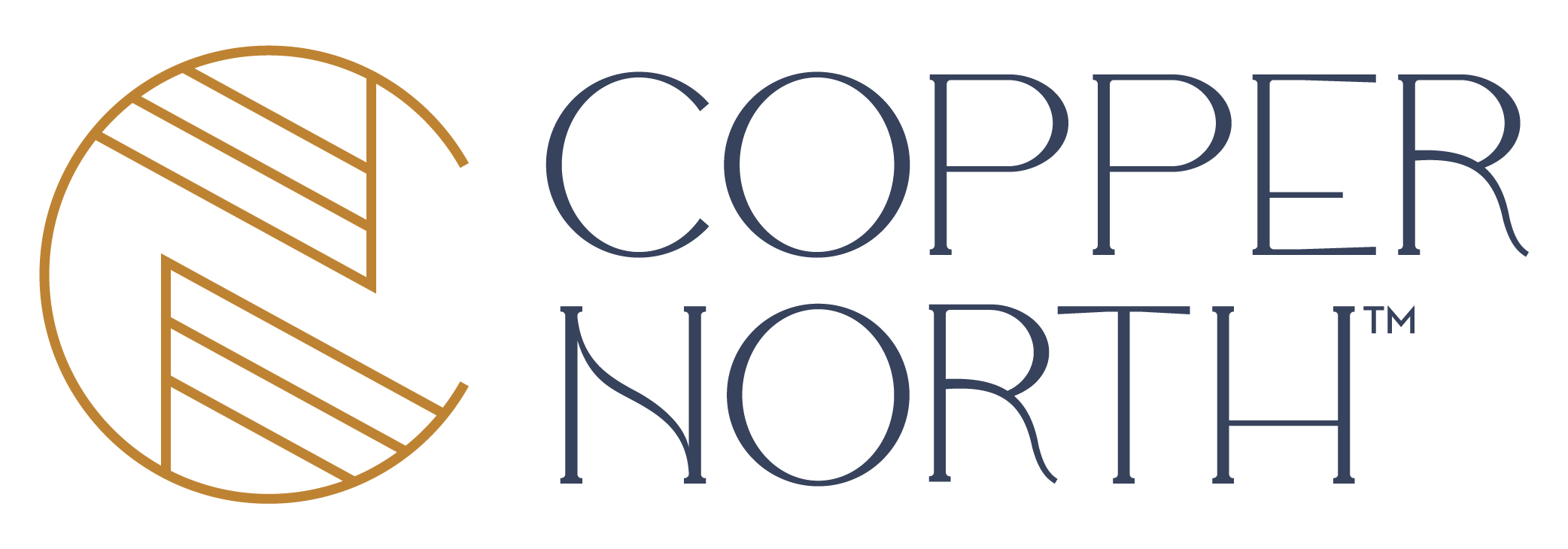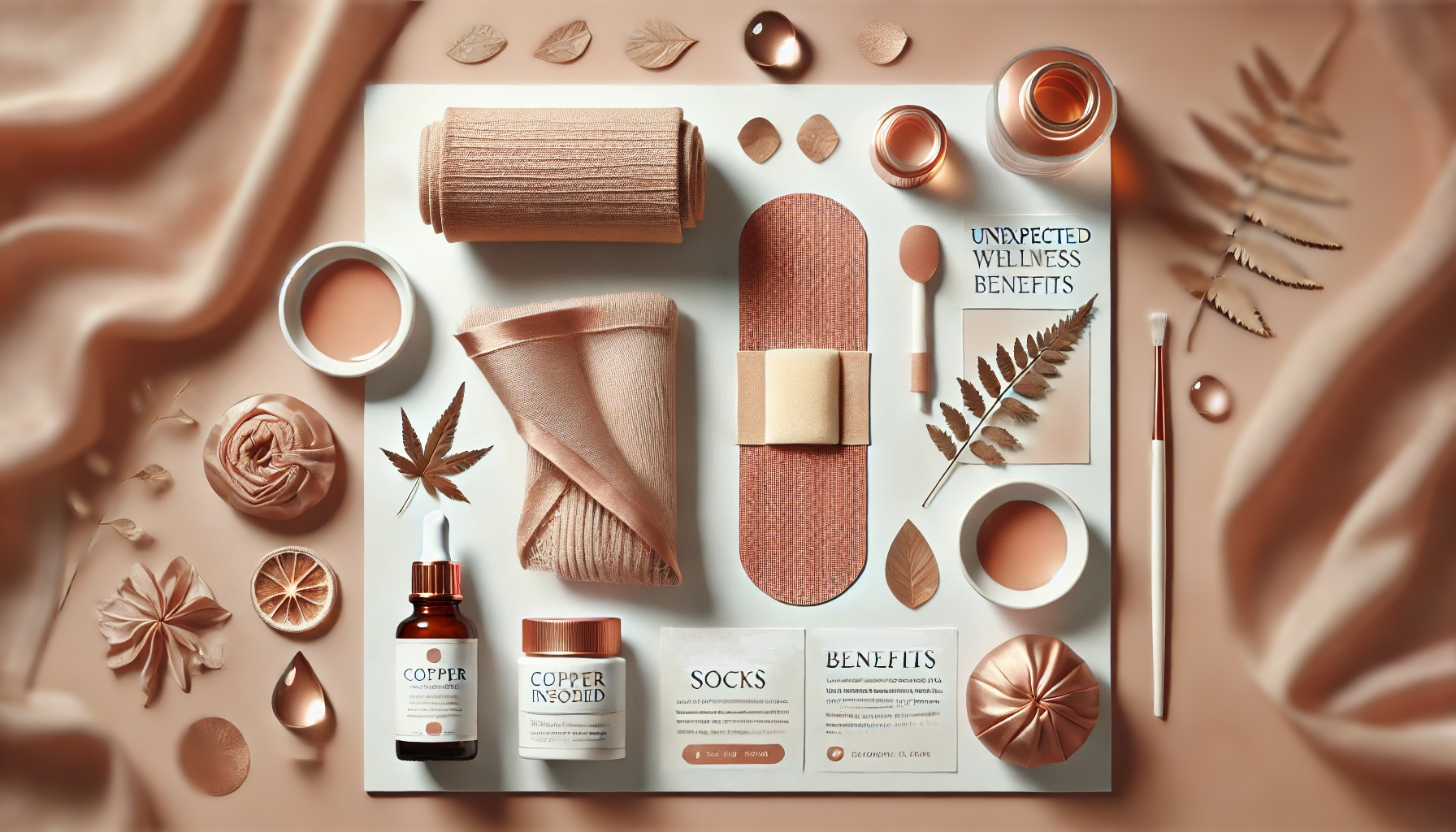When we think of copper, we might picture pennies or copper pipes. But in reality, this ancient metal is making a big impact on modern wellness in surprising ways. From boosting skin health to purifying water, copper is everywhere, and its benefits are being recognized in fields ranging from healthcare to personal care products. We explore the top 9 unexpected uses of copper in health and wellness.
-
Copper-Infused Wound Dressings
Copper has long been used for its antimicrobial properties, and in modern medicine, it's now a key ingredient in wound care. Copper-infused dressings, bandages, and patches are becoming increasingly popular for treating chronic wounds, such as diabetic foot ulcers, athlete’s foot, and even burns. These dressings not only help promote faster healing but also reduce the risk of infection by killing bacteria and fungi on contact. A 2010 study published in the journal Wounds demonstrated that copper oxide-impregnated dressings improved wound healing by reducing microbial load and supporting tissue regeneration (1).
-
Copper-Infused Skincare Products as Natural Anti-Aging Treatment
Copper peptides are increasingly used in skincare products for their anti-aging and skin-repairing properties. Copper plays a crucial role in collagen production, which helps maintain skin elasticity and firmness. Studies, such as one published in The International Journal of Molecular Sciences, have found that copper peptides can improve skin tone, reduce wrinkles, and stimulate the regeneration of damaged skin cells (2). Today, you’ll find copper in everything from anti-wrinkle creams to rejuvenating serums, providing a natural, effective way to keep skin looking youthful.
One of the most innovative uses of copper in wellness today is in bedding and clothing. Copper-infused fabrics are designed to deliver the mineral's benefits directly to the skin, supporting healing, reducing inflammation, and even fighting bacteria. Products like copper-infused pillowcases and sheets are becoming popular for people with sensitive skin, acne, or those who want to support skin rejuvenation. A study published in the Journal of Cosmetic Dermatology detailed an 8-week double-blind test that found patients who slept on copper-oxide-containing pillowcases had a “significant decrease of crow’s feet” and a reduction in skin roughness, compared to a control group that slept on pillowcases without copper (3).
Copper’s antimicrobial effects and skin elasticity benefits are also evident in clothing. A 2014 study published in the clinical journal Skin Research and Technology found that copper oxide socks worn by volunteers led to a 31% increase in skin elasticity after 4 weeks, relative to a control population that wore socks without copper (4). For those with chronic skin conditions or who have challenges with skin texture or firmness, copper-infused bedding and apparel can be a game changer.
-
Copper as an Antibacterial and Antiviral Surface in Hospitals
Copper is well-known for its ability to kill bacteria, viruses, and fungi on contact. This makes it an ideal material for hospital settings where preventing infection is a top priority. From bedrails to doorknobs to surgical instruments, copper is being used more frequently to reduce the spread of healthcare-associated infections (HAIs). A 2020 study in Applied & Environmental Microbiology confirmed that copper surfaces were more effective than traditional plastic or stainless steel at reducing the antimicrobial burden, reducing bacteria levels by 94% (5).
A further benefit of copper, relative to other minerals, is that it continues to be effective long after first use and does not suffer from the effects of oxidation. That same study in Applied & Environmental Microbiology noted that even after 11 months, “copper does not lose its bactericidal effectiveness through surface oxidation, unlike silver” (6).
-
Copper Jewelry for Arthritis and Pain Relief
Copper bracelets and rings have become popular among people with arthritis, joint pain, and inflammation. The idea behind wearing copper jewelry is that the metal can be absorbed through the skin, providing pain relief and reducing inflammation. While scientific research on the efficacy of copper jewelry for arthritis is still mixed, it remains popular with some people with rheumatoid arthritis.
-
Copper in Water Purification Systems
Copper is a powerful natural antimicrobial, which is why it's increasingly being used in water purification systems. Copper pipes and filters are effective at reducing harmful bacteria, viruses, and algae in drinking water, making it a popular material for purifiers, filtration systems, and water storage. Studies, such as one published in Journal of Health, Population and Nutrition, have shown that copper effectively kills waterborne pathogens, including E. coli and two types of salmonella (7). Using copper to purify water offers a natural, sustainable way to ensure safe drinking water, especially in areas prone to contamination.
-
Copper in Socks and Footwear for Health
Copper is being used in footwear design, such as insoles and socks, to promote foot health and comfort. Copper-infused insoles are said to reduce foot odor, combat fungal infections, and improve circulation in the feet. Copper’s antimicrobial properties help to reduce the growth of bacteria and fungi, making these insoles ideal for people prone to foot infections or athletes looking to prevent athlete’s foot. While further research is needed to definitively prove its effectiveness in foot care, many users report a reduction in foot odor and discomfort after using copper-infused insoles.
Multiple studies have conclusively demonstrated the positive impact copper-infused socks have at stopping athlete’s foot. A 2008 study over showed 65-95% improvement across multiple symptoms of athlete’s foot after 3 weeks wearing copper-oxide socks (8). A 2012 photographic before & after review of 282 participants found significant improvement in the symptoms of athlete’s foot after wearing socks with copper oxide (9).
-
Copper in Healing Salves and Ointments
Copper is also used in topical ointments and salves, particularly for its ability to speed up the healing of minor cuts, burns, and wounds. Copper-based creams can help promote collagen production and improve tissue regeneration, making them useful for treating scarring and damaged skin. Studies, like one published in PLOS One, from the Public Library of Science, have found that copper accelerates wound healing by moderating inflammatory gene expression (10). For anyone looking to speed up recovery from skin injuries, copper-infused topical treatments offer a natural, effective option.
-
Copper Supplements for Overall Health
Copper is an essential trace mineral that supports various bodily functions, including iron metabolism, bone health, immune system health, and the production of collagen. Many people take copper supplements to ensure they’re getting enough of this mineral, especially if they have a deficiency. While copper deficiencies are rare, they can lead to issues like anemia, weak bones, and impaired immune function. According to a scientific review published in Nutrients, copper supplementation can help improve bone health by slowing bone mineral loss (11).
Conclusion
Copper’s role in health and wellness is vast, and it’s clear that this ancient metal is far from outdated. From wound care to skincare, to improving sleep and fighting infections, copper continues to offer a range of benefits that can enhance overall health and well-being. Whether it’s found in skincare products, copper-infused clothing and bedding, or even hospital surfaces, copper is proving to be a versatile and powerful element for today’s wellness-conscious individuals.
For more information on copper and its many uses in wellness, check out these related articles:
- Copper and Anti-Aging: How This Mineral Supports Skin Rejuvenation
- The 6 Scientific Ways Copper Supports Skin Health
References
- Borkow, G. (2010). “Copper oxide impregnated wound dressing: biocidal and safety studies.” Wounds, 22(12):301-10. Link
- Pickart, L, et al. (2018). “Regenerative and Protective Actions of the GHK-Cu Peptide in the Light of the New Gene Data.” International Journal of Molecular Sciences, 19(7):1987. Link
- Baek, J. et al. (2012). “Reduction of facial wrinkles depth by sleeping on copper oxide-containing pillowcases: a double blind, placebo controlled, parallel, randomized clinical study.” Journal of Cosmetic Dermatology. 1473-2165.2012.00624.x Link
- Dykes, P. (2014). “Increase in skin surface elasticity in normal volunteer subjects following the use of copper oxide impregnated socks.” Skin Research and Technology. 10.1111/srt.12187. Link
- Schmidt, M. et al. (2019). “Self-Disinfecting Copper Beds Sustain Terminal Cleaning and Disinfection Effects throughout Patient Care.” Applied & Environmental Microbiology. 86(1):e01886-19. Link
- Schmidt, M. (2019).
- Sudha, VB P. et al. (2012). “Storing Drinking-water in Copper pots Kills Contaminating Diarrhoeagenic Bacteria.” Journal of Health, Population and Nutrition. 30(1):17–21. Link
- Zatcoff, R., et al. (2008). “Treatment of tinea pedis with socks containing copper-oxide impregnated fibers.” The Foot. 18(3):136-141. Link
- Gargiulo, M.E., et al. (2012). “Analysis of the Effect of Wearing Copper Oxide Impregnated Socks on tinea pedis Based on “Before and After” Pictures – A Statistical Follow-up Tool.” The Open Biology Journal. 5:17. Link
- Zangiabadi, S., et al. (2023). “Copper infused fabric attenuates inflammation in macrophages.” PLOS One, 18(9):e0287741. Link
- Rondanelli, M., et al. (2021). “Copper as Dietary Supplement for Bone Metabolism: A Review.” Nutrients. 13(7), 2246. Link





Share:
Copper’s Antibacterial Properties and Health Benefits
How Copper is Revolutionizing Wellness and Skin Health